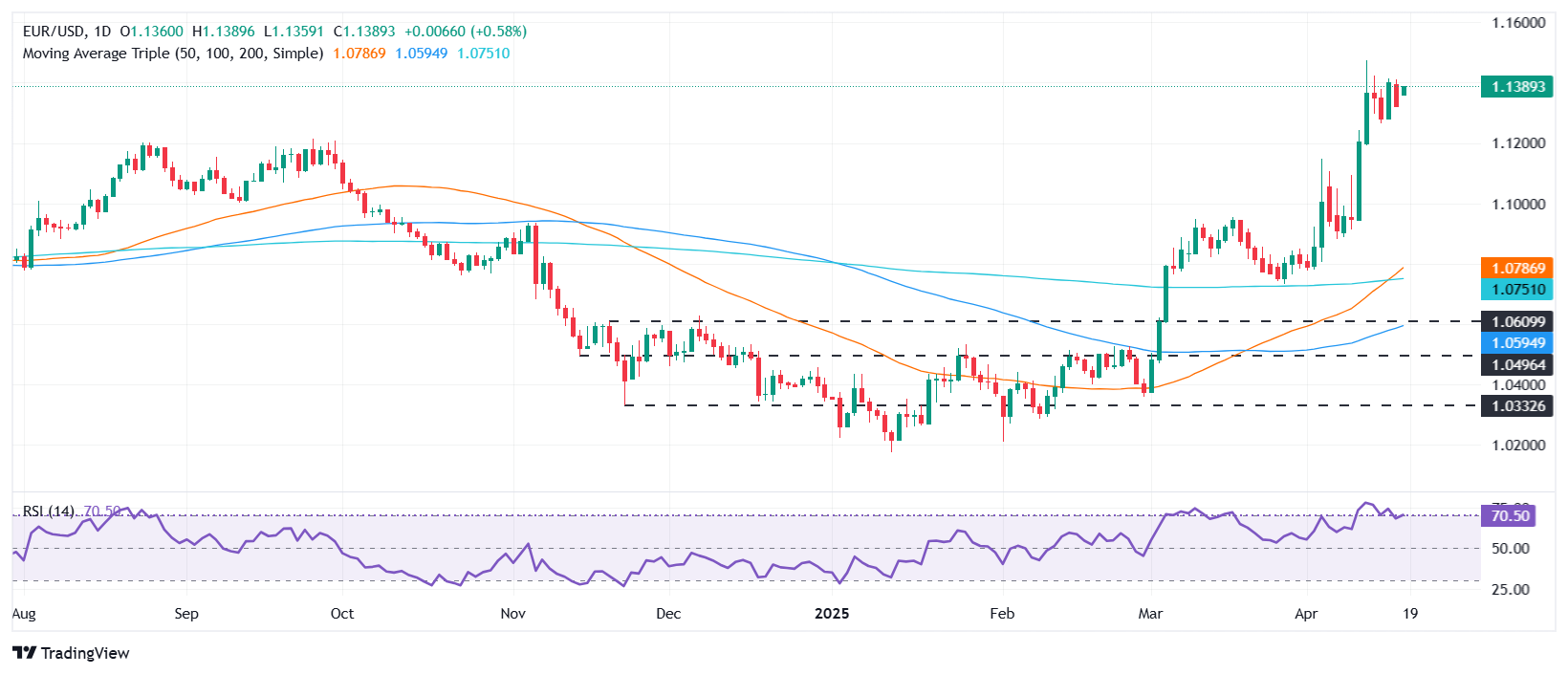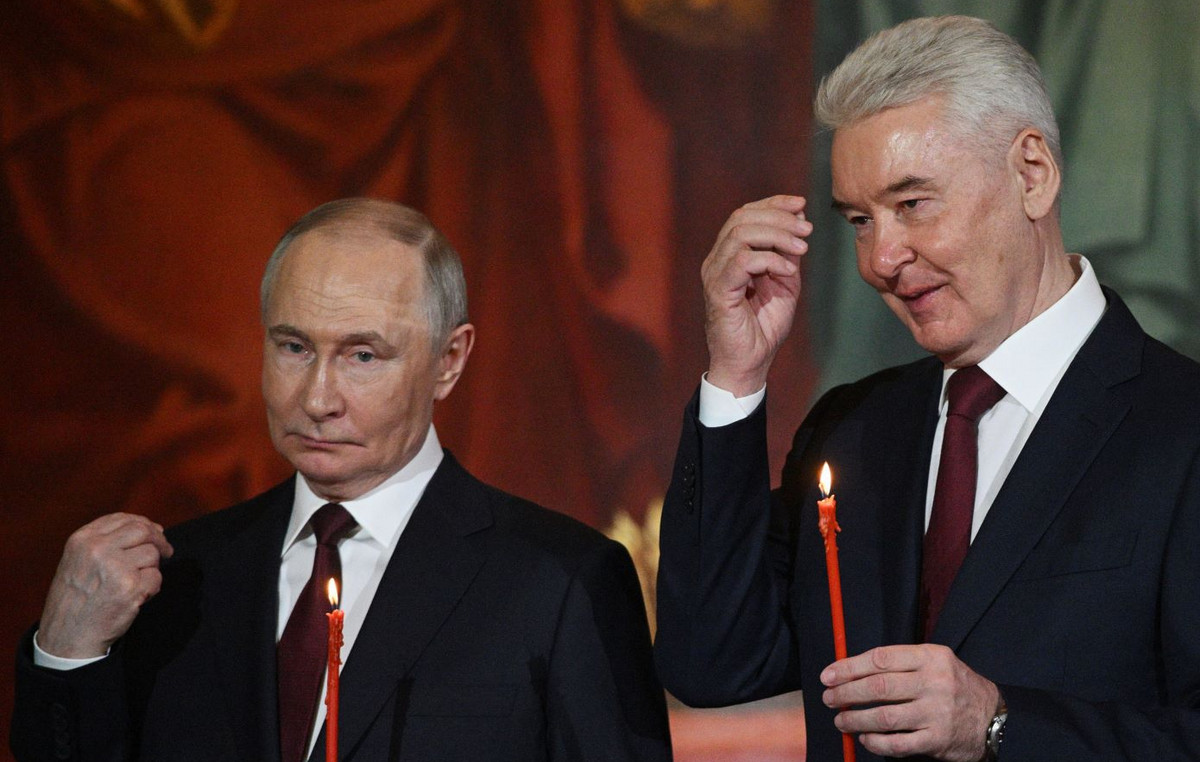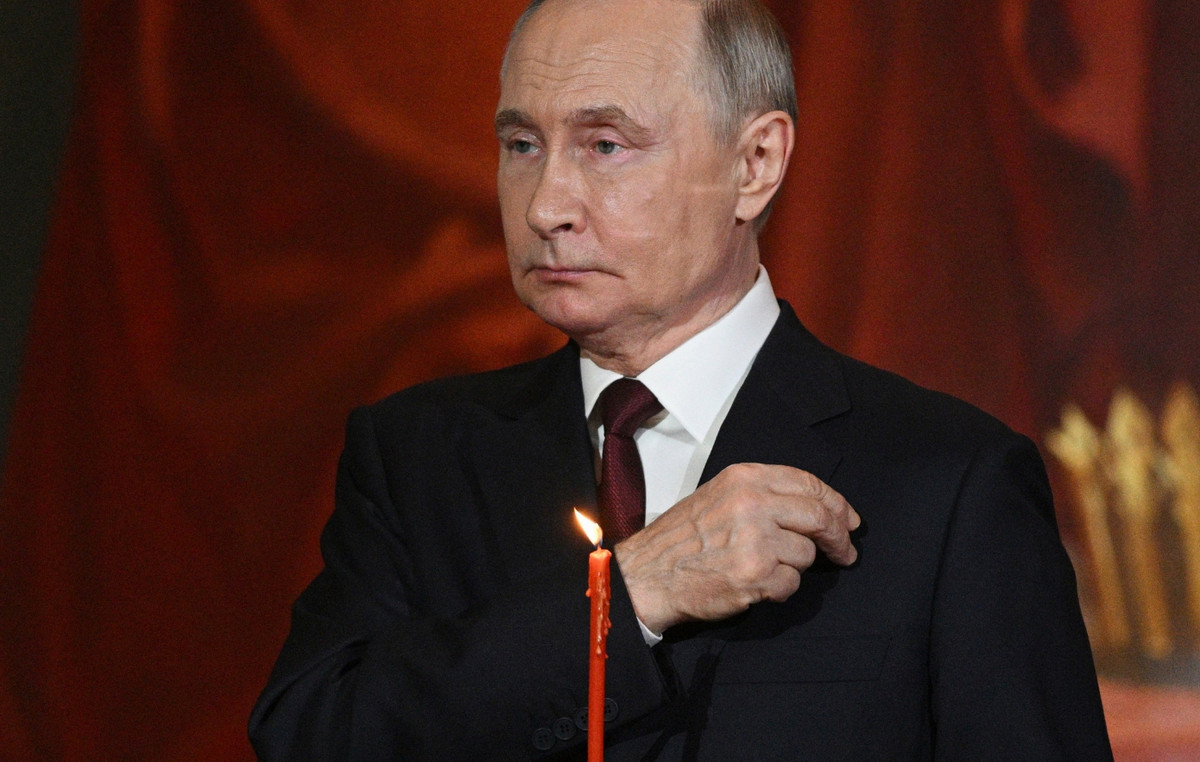- The euro advances to the dollar pressure after the announcement of the White House on tariffs on Chinese ships, which feeds global commercial risks.
- Trump supposedly furious with the president of the Fed, Powell; An advisor says that the president is reviewing the legality of his dismissal.
- The Müller of the ECB says that the fall in energy prices and tariffs justify a rate cut, although it warns that fragmentation can feed inflation in the future.
The euro advances against the US dollar in a moderate trade, since the financial markets are closed for Good Friday. At the time of writing, the EUR/USD is quoted at 1,1385, with an increase of 0.21%, lacking the force to break the elusive mark of 1.14.
EUR/USD rises 0.21% in a thin trade for vacations while the markets digest the shipping tariffs between the US and China and the renewed concerns about the independence of the Fed
The narrative of the financial markets remains focused on the controversial commercial policies of the United States (USA), which led to the prices to get rid of the dollar in favor of other currency pairs of the G8, such as the shared currency.
Even so, the White House advances in the application of tariffs to the Chinese ships that dock in US ports, which would threaten to alter global shipping routes and climb the commercial war between China and the US.
On Thursday, last minute news revealed that Trump was upset with the president of the Fed, Jerome Powell, and considered to dismiss him. Although market participants did not react to the headline, recently, the Senior White House Advisor, Hasset, insisted that “Trump is studying whether to say goodbye to Powell from the Fed is an option.”
Meanwhile, the American dollar index (DXY), which tracks the performance of the dollar against a basket of six other currencies, falls by -09% to 99.31.
With the light news flow, the Müller of the ECB revealed that the fall in energy prices and tariffs supported the rate cut. He added that the policy does not remain a restriction and that the key indicators are moving in the right direction. He also pointed out that a more fragmented economy could push up prices.
EUR/USD price forecast: Technical Perspectives
The EUR/USD is quoted near the peak of the current week about 1,1400, with the price action showing that the euro is prepared to extend its profits beyond that area, opening the door to a greater rise. Key resistance levels as the maximum of April 11 in 1,1473, followed by 1,1498, on February 2022, before the 1,1500 figure.

Euro Faqs
The euro is the currency of the 19 countries of the European Union that belong to the Eurozone. It is the second most negotiated currency in the world, behind the US dollar. In 2022, it represented 31 % of all foreign exchange transactions, with an average daily business volume of more than 2.2 billion dollars a day. The EUR/USD is the most negotiated currency pair in the world, with an estimate of 30 %of all transactions, followed by the EUR/JPY (4 %), the EUR/GBP (3 %) and the EUR/AU (2 %).
The European Central Bank (ECB), based in Frankfurt (Germany), is the Eurozone reserve bank. The ECB establishes interest rates and manages monetary policy. The main mandate of the ECB is to maintain price stability, which means controlling inflation or stimulating growth. Its main tool is the rise or decrease in interest rates. Relatively high interest rates (or the expectation of higher types) usually benefit the euro and vice versa. The GOVERNMENT BOOK of the ECB makes decisions about monetary policy in meetings that are held eight times a year. The decisions are made by the directors of the National Banks of the Eurozone and six permanent members, including the president of the ECB, Christine Lagarde.
Eurozone inflation data, measured by the harmonized consumer prices index (IPCA), are an important economic indicator for the euro. If inflation increases more than expected, especially if it exceeds 2% of the ECB, it forces the ECB to rise interest rates to control it again. Relatively high interest rates compared to their counterparts usually benefit the euro, since they make the region more attractive as a place for global investors to deposit their money.
Published data measure the health of the economy and can have an impact on the euro. Indicators such as GDP, manufacturing and services PMIs, employment and consumer trust surveys can influence the direction of the single currency. A strong economy is good for the euro. Not only attracts more foreign investment, but it can encourage the ECB to raise interest rates, which will directly strengthen the euro. Otherwise, if economic data is weak, the euro is likely to fall. The economic data of the four largest economies in the euro zone (Germany, France, Italy and Spain) are especially significant, since they represent 75% of the economy of the euro area.
Another important fact that is published on the euro is the commercial balance. This indicator measures the difference between what a country earns with its exports and what you spend on imports during a given period. If a country produces highly demanded export products, its currency will gain value simply by the additional demand created by foreign buyers seeking to buy those goods. Therefore, a positive net trade balance strengthens a currency and vice versa in the case of a negative balance
Source: Fx Street
I am Joshua Winder, a senior-level journalist and editor at World Stock Market. I specialize in covering news related to the stock market and economic trends. With more than 8 years of experience in this field, I have become an expert in financial reporting.







